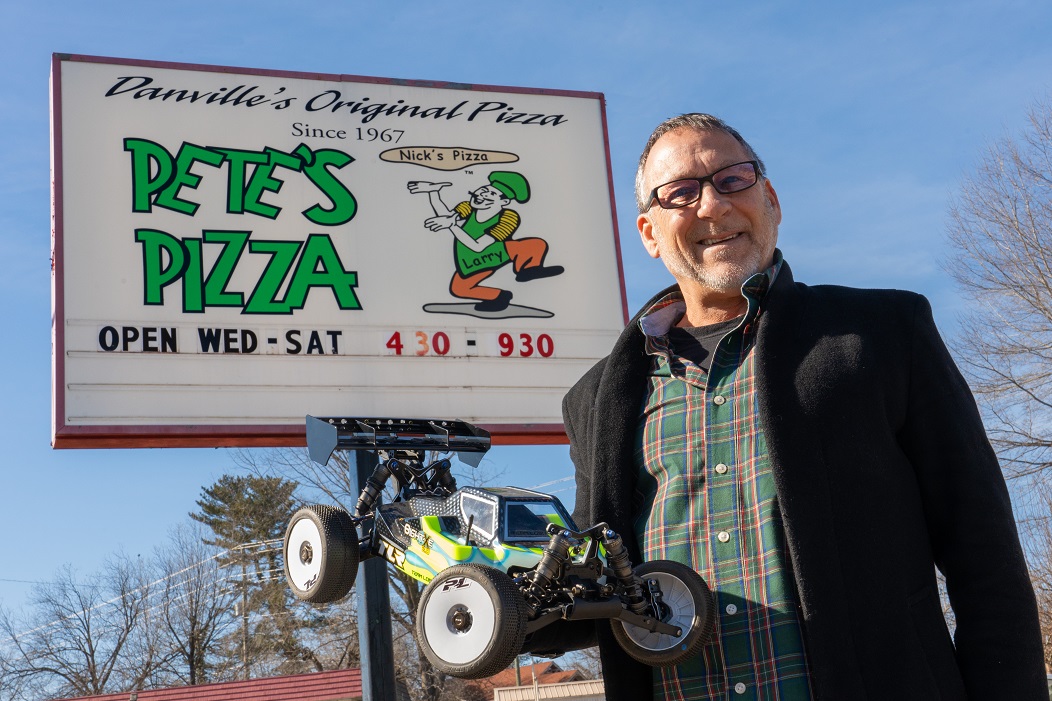
Larry ‘Nick’ Nicholas, owner of Pete’s Pizza. By Paul Liggitt
WHY IN THE WORLD is a Greek guy from Texas running a pizza place and racing radio control (RC) cars on a track that he built, just outside the Danville restaurant’s back door? Inquiring minds really want to know about this one.
A long time ago I discovered that southern living was more to my liking, however, I still remember a favorite pizza place in my New Jersey hometown. It was just the place where we all went to hang out. It was a family place and had the owner’s last name. After all, a person’s name was their brand, and their logo was the product or service they sold. It all seemed so simple. That’s the way it is with Pete’s Pizza at 2176 W. Main St., Danville. So how did a Greek guy named Larry ‘Nick’ Nicholas end up there as the owner, cook, and purveyor of dinner-style pizzas? You might be thinking that Greek restaurants are better known for food like moussaka and dishes with pita bread. But some say that pita may have been the root word for pizza. In fact, many cultures had foods on flat breads consisting of vegetables, spices, and sauces of all kinds. Even though there are many foodie purists out there that can wax more eloquently about the precise differences in Italian vs Greek foods, Larry did mention some of the distinctions in his recipes, and you should definitely visit to discover them for yourself. But this article is not so much about food as it is about the personality of an individual and a glimpse into his story. It’s a story that makes him a part of an eclectic regional culture to be enjoyed by all.
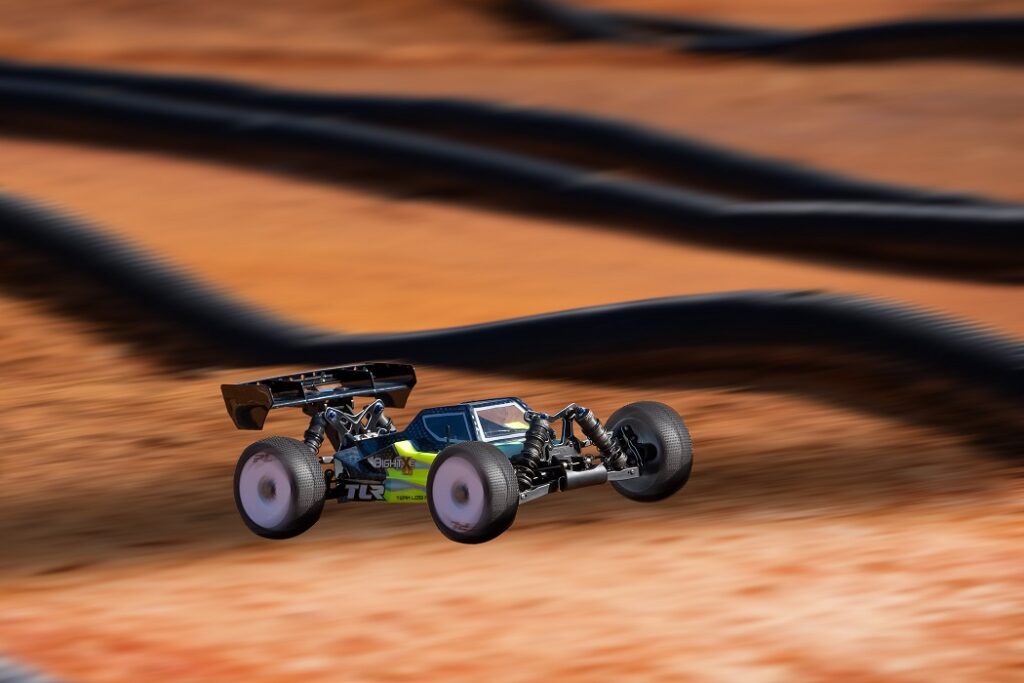
Larry Nicholas’s family emigrated from Greece and landed in Danville in the 1940s. From there his father traveled to Texas in the late 1950s, was attached to the US Air Force, married, and started a family. Larry’s first remembrance of the pizza business was in the mid-1960s watching his father, Nick Nicholas, sell pizzas from a trailer in Wichita Falls, Texas. Nick also had a brick-and-mortar shop called “Pizza Hut” but it was not the well-known restaurant. His dad didn’t start Pizza Hut, but a couple of “suits” did pay him a visit to tell him to nix the Hut part of the name, so the business simply became Nick’s Pizza. From there the family traveled to Magnolia, Ark., and opened up Pizza Q, (for Pizza Quick) a shop just across the street from a local university. Pizza, pool, and beer were guaranteed winners for a college-town restaurant. In 1968, they returned to Danville, where Larry met his extended Greek family and had his mind blown when he heard his dad speaking Greek for the first time.
Not only that but he came to appreciate Ya Ya, his grandmother, and all of her exotic and sometimes scary but effective home remedies. Ya Ya, Larry commented, meant old woman, but was reserved only for family use. If it was spoken to his grandmother by an outsider, they were likely to experience a different side of Greek culture that was not so pleasant.

Having settled in Danville, Nick’s Pizza was established, and if you were in the family, you were a part of the restaurant business. The restaurant business is often all-consuming, requiring constant attention, especially when working with a fragile, deteriorating product like food. During our interview, Larry would mention things his dad would tell him about not taking the business home with you, but as Larry also noted, as an owner-operator, it is almost impossible to do.
In Danville, Larry was plugged into the restaurant scene because of his dad’s place and uncle Pete, who also owned a pizza place on the other side of town. Larry was good at sports, competitive, and persevering. Those qualities helped him survive and succeed during some difficult times later in his life. After high school, he went back to Texas for a while, where he studied at University of Texas, Arlington. But unlike most students, he actually took classes about things he was interested in, such as business, economics, and even some culinary classes. In his mid-20s, he returned to North Carolina and settled in Greensboro in the more profitable construction and carpentry trades; a far cry from the restaurant business in which he had grown up. When a back injury sidelined him for a while in 1987, however, a new chapter of his life began.
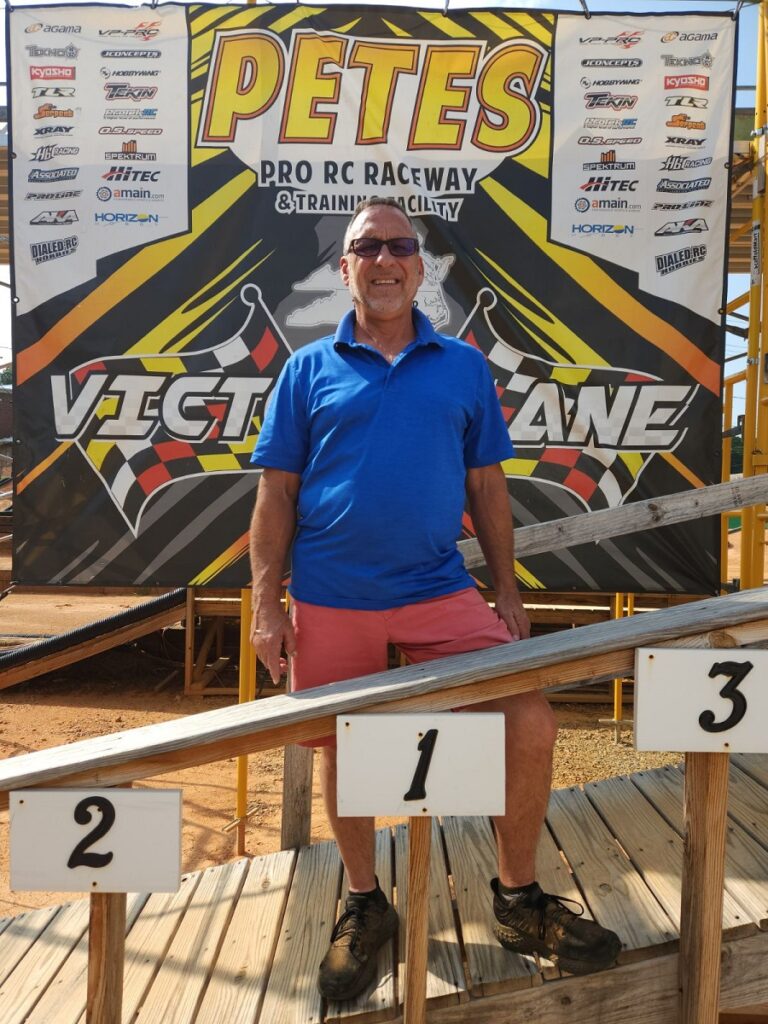
Larry became fascinated with RC cars while hanging out at a friend’s house. Fast cars, dirt tracks, jumps, and the smells of burning electric motors. What’s not to love for any 20-year-old guy with time on his hands? One thing led to another. He bought a car, and dove deep into the hobby. One small thing though: he really knew nothing about any of it. In his searching for connections and information, he found both. Someone said, “I know a guy who you should talk to,” and it just happened to be someone that Larry knew in the construction trade.
He said, “it started as fun and games” but it fostered a relationship with Joey Edwards, who became a “life-long friend. He and I taught each other how to race.” From there, he experienced club racing, progressed into pro racing, and became the Regional 3 R.O.A.R (Remotely Operated Auto Racers) director. The region covered North Carolina, South Carolina, Tennessee, Georgia, and Alabama, and he built RC tracks in several cities in North Carolina during his 1992-1998 career – and yes, it was definitely a career that took him into his 30s. At one point Larry had an opportunity to speak with Masami Hirosaka, one of the most successful RC racers of all time, who asked him, “How good do you want to be?” That is when he realized that to be good at something, one has to “be good at practicing, not playing.” So that’s what he did, practicing with his 2WD car until he became, in Larry’s words, a “one-trick pony.” He eventually changed to a Losi car: a 4WD beauty with a dizzying number of technical features that could probably reach speeds up to 35 miles per hour – more power than it could ever use on the track. At one point he was ranked #1 on the east coast and #34 in the world. In 1998, he was offered a sponsorship with the Losi Racing Group but turned it down because, in his words, “Racing is a young man’s game.” At that point in his life, he was simply content to have fun with it. Also, during the 1990s Larry’s father unexpectedly passed away, and just a few years after Larry’s last pro race in 1998, his uncle Pete passed as well, leaving the pizza shop in Danville without a proprietor and Larry with some adult decisions to make.
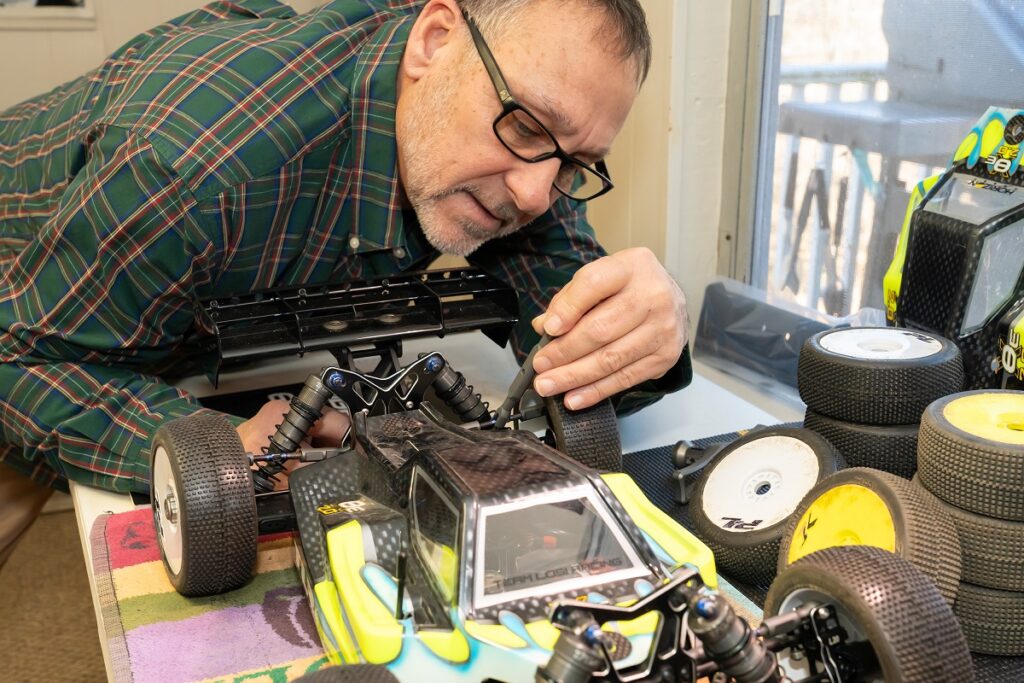
Like an RC dirt racetrack, bumpy circumstances and the twists and turns of life have a way of shaping our path, and Larry inherited part of Pete’s Pizza. He considered his options and had the opportunity to purchase the other parts from Pete’s heirs. It is almost as if things had come full circle back to his days of being in the family pizza business. But racing was not gone forever; it was now just at a different scale and pace. In 2002, he built an RC track that is still located behind Pete’s, and he finally permanently relocated to Danville in 2007. What Larry likes to call “simple club racing” takes place at his track, which hosts about eight races a year with 35 to 50 entries at each event. He also collects used – but not used-up — tires and donates them to a group called “Race Like a Girl” so that girls get a chance to have a go at the track and enjoy the experience.
Larry’s adventurous and positive attitude spills out when he starts telling stories about family, RC racing, and his faith journey that helps him manage the challenges of restaurant ownership and whatever life throws his way. He tells me that fresh dough and fresh sauce are still made at Pete’s, and, “What is not good is not on the menu.” According to Larry, “other pizza places have a playbook, but I have a kitchen.” To experience Larry’s kitchen – AKA Pete’s Pizza – you will just have to pay him a visit!
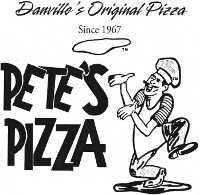
Pete’s Pizza Since 1967
2176 West Main Street
Danville, Va. 24541
434-799-9031 / 434-799-9131
































































































